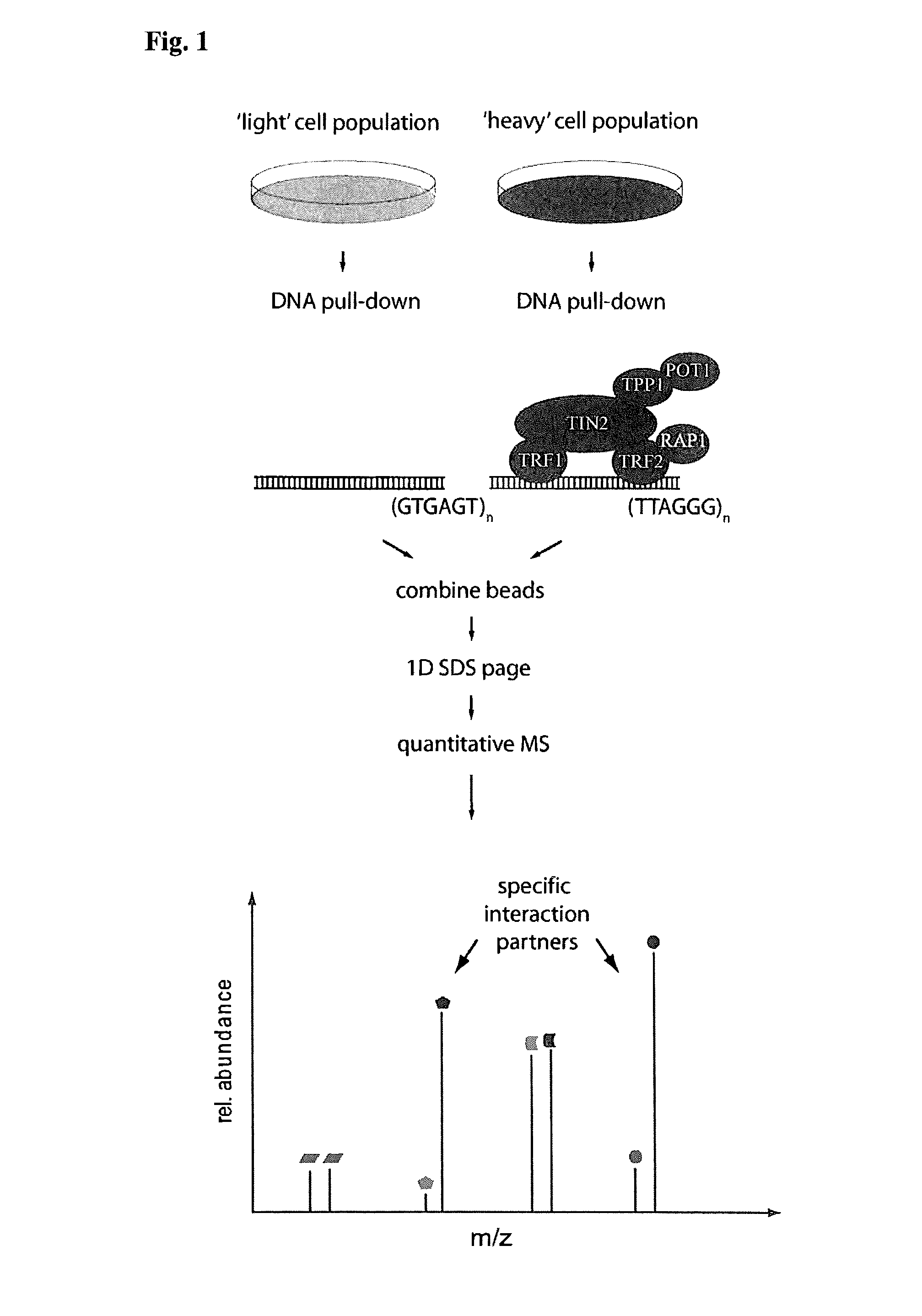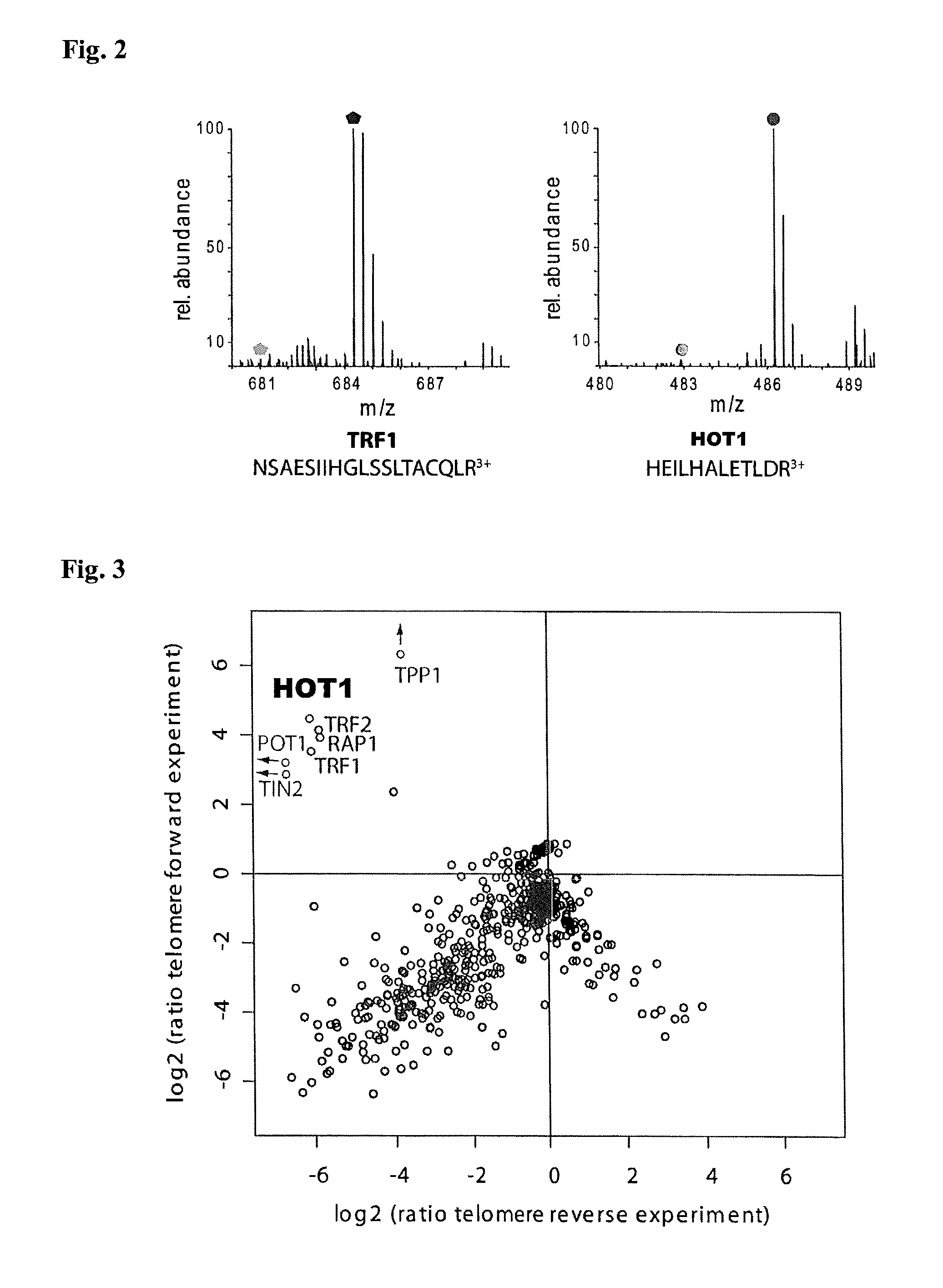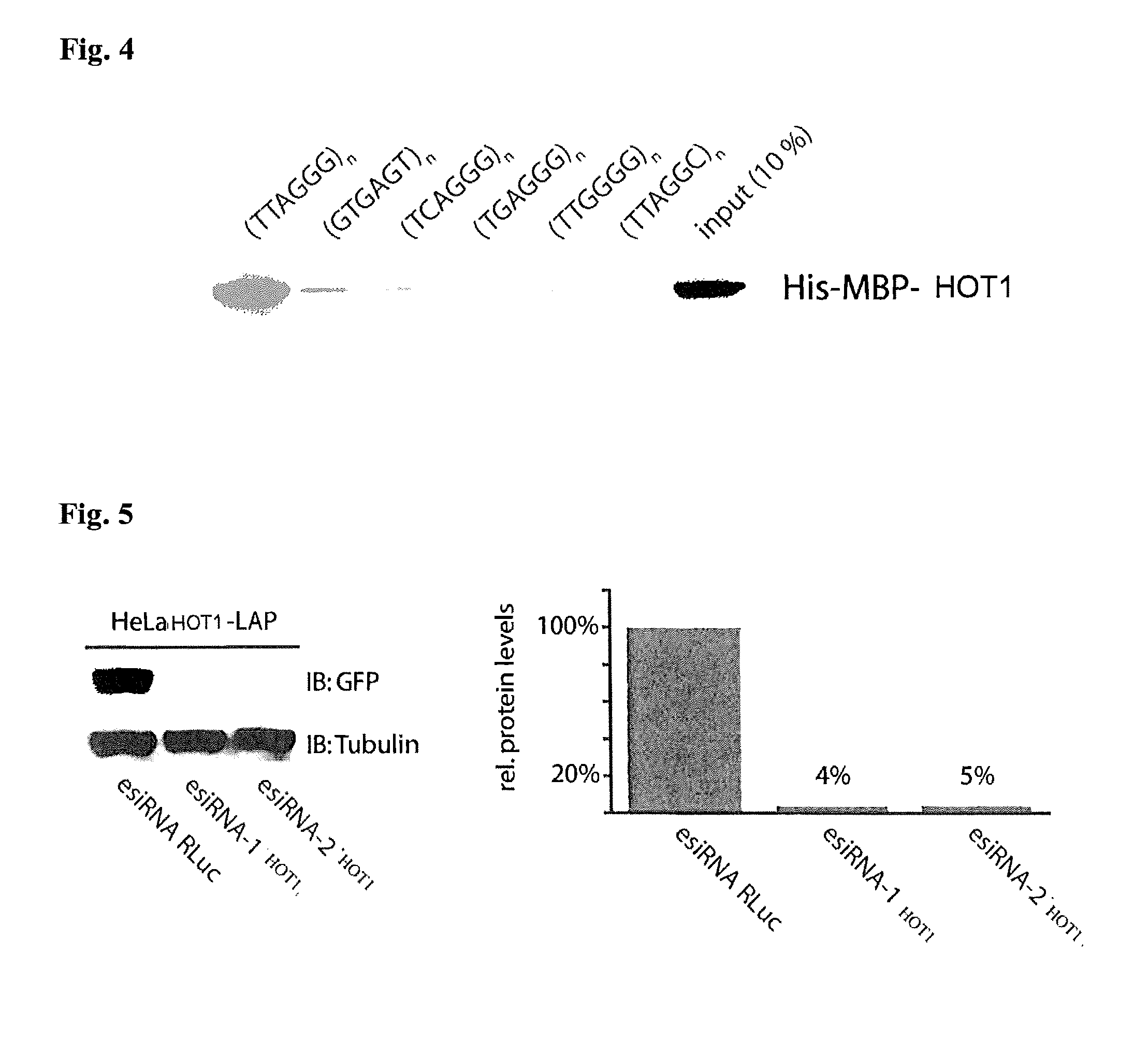Hot1 and uses thereof
a technology of hot1 and telomere length, applied in the field of hot1 and uses thereof, can solve the problems of incomplete knowledge about the mechanisms involved in telomerase-dependent telomere length homeostasis and insufficient understanding of the mechanism of telomere lengthening
- Summary
- Abstract
- Description
- Claims
- Application Information
AI Technical Summary
Benefits of technology
Problems solved by technology
Method used
Image
Examples
example 1
Identification of HMBOX1 (HOT 1) as a Direct and Specific Telomere Repeat Binding Protein
[0111]To discover novel DNA-binding proteins we previously used SILAC-based quantitative mass spectrometry (Ong, S. E. et al. Mol. Cell. Proteomics 1, 376-386 (2002)) to identify factors binding to particular functional DNA fragments (Butter, F., et al. EMBO Rep. 11, 305-311 (2010); Mittler, G., et al. Genome Res. 19, 284-293 (2009)). In this assay, specific binding of proteins is detected by incubation of heavy amino acid encoded cell lysates with the bait sequence, using as a control a light amino acid encoded cell lysate. Specific binders display a differential isotope ratio whereas background binders have a one-to-one ratio. In the present attempt to identify telomere binding proteins the inventors used polymerized biotinylated double-stranded oligonucleotides of the telomeric sequence (TTAGGG; SEQ ID NO: 7) in comparison to a scrambled control sequence (TGTGAG; SEQ ID NO: 8). Both oligonucl...
example 2
Functional Characterisation of HOT1
[0116]Next, we tested a potential function of HOT1 in telomere homeostasis, by depleting the protein in HeLa cells with endoribonuclease-prepared siRNA (esiRNA) (Kittler, R., et al. Nat. Methods 2, 779-784 (2005)) (FIG. 5). Three days after transfection, metaphase spreads were prepared for telomere length measurements by quantitative telomere specific Fluorescence In Situ Hybridization (FISH) (Londono-Vallejo, J. A., et al. Nucleic Acids Res 29, 3164-3171 (2001)). Knockdown of HOT1 resulted in significant telomere shortening (FIG. 6) with FISH signals reduced on average by 58% and 43% by two independent esiRNAs, respectively. Consistent with this finding we also observed a significant increase in the appearance of signal-free chromosome ends upon HOT1 knockdown (FIG. 6, FIG. 7). In a complementary experiment the inventors transiently overexpressed Flag-HOT1 in HeLa cells and analyzed telomere length three days after transfection. Coherent with shor...
example 3
Classifying a Cancer as a Telomerase-Negative Cancer
[0124]In this assay cells were fixed with 3% paraformaldehyd solution (in 1×PBS supplemented with 5 mM EGTA and 1 mM MgCl2) for 10 min at room temperature. Cells were then washed twice with a 1×PBS solution containing 30 mM glycine. A permeabilization step with 1×PBS with 0.5% TritonX-100 at 4° C. for 5 min was followed by two additional washes with the 1×PBS+30 mM glycine solution. Cells were then blocked for 15 min at room temperature in blocking solution (1×PBS containing 0.2% fish skin gelatine) PML and HOT1 were marked by staining with primary antibodies against PML (as an APB marker; mouse monoclonal anti-PML PG-M3 antibody, Santa Cruz sc-966; 1:500 dilution) and HOT1 (MPI-CBG Antibody Facility; 1:1000 dilution) in blocking solution for 1 h at room temperature. After three washes for 3 min each with blocking solution secondary antibodies (goat-anti-mouse-Alexa488 and goat-anti-rabbit-Alexa562, Invitrogen; both at 1:500 diluti...
PUM
| Property | Measurement | Unit |
|---|---|---|
| molecular mass | aaaaa | aaaaa |
| inner diameter | aaaaa | aaaaa |
| inner diameter | aaaaa | aaaaa |
Abstract
Description
Claims
Application Information
 Login to View More
Login to View More - R&D
- Intellectual Property
- Life Sciences
- Materials
- Tech Scout
- Unparalleled Data Quality
- Higher Quality Content
- 60% Fewer Hallucinations
Browse by: Latest US Patents, China's latest patents, Technical Efficacy Thesaurus, Application Domain, Technology Topic, Popular Technical Reports.
© 2025 PatSnap. All rights reserved.Legal|Privacy policy|Modern Slavery Act Transparency Statement|Sitemap|About US| Contact US: help@patsnap.com



